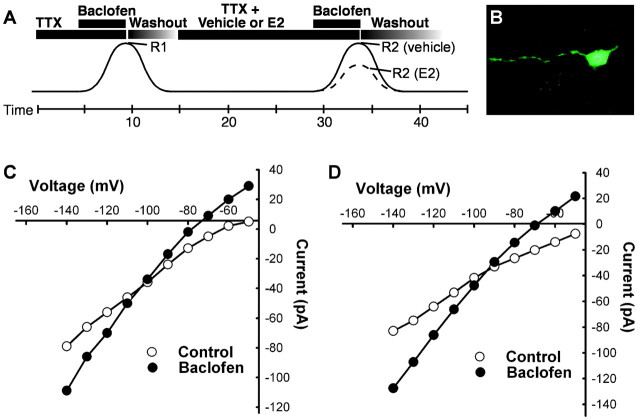Figure 1.
17β-Estradiol and SERMs attenuate the GABAB response in hypothalamic neurons. A, Schematic showing the protocol for drug administration in the whole-cell patch voltage-clamp experiments (Vhold, -60 mV). After seals were formed and the whole-cell configuration was obtained, slices were perfused with TTX (1 μm) for 5 min. The first GABAB receptor-mediated response was generated by perfusing baclofen (at EC50 concentration of 5 μm) until a steady-state outward current was obtained (R1). After drug washout, the current returned to its predrug resting level. The cells were then treated with E2 and/or other drugs for 15 min, baclofen (5 μm) was perfused again, and R2 was measured. The effects of estrogen or other drugs on the baclofen response are expressed as a percentage of R2 over R1. B, An example of a biocytin-filled neuron after whole-cell patch-clamp recording for 13 min, illustrating the extent of the biocytin labeling. The slice was fixed immediately after the recording. C, The prebaclofen and postbaclofen (5 μm) I/V relationships from a dopamine neuron. The reversal potential for the outward current was close to the predicted equilibrium potential for potassium. D, The prebaclofen and postbaclofen I/V relationships after E2 treatment in another cell, illustrating the same reversal potential for the baclofen response. I/Vs were done before and after each drug treatment, and none of the drug treatments had any effect on the reversal potential for the baclofen response.

